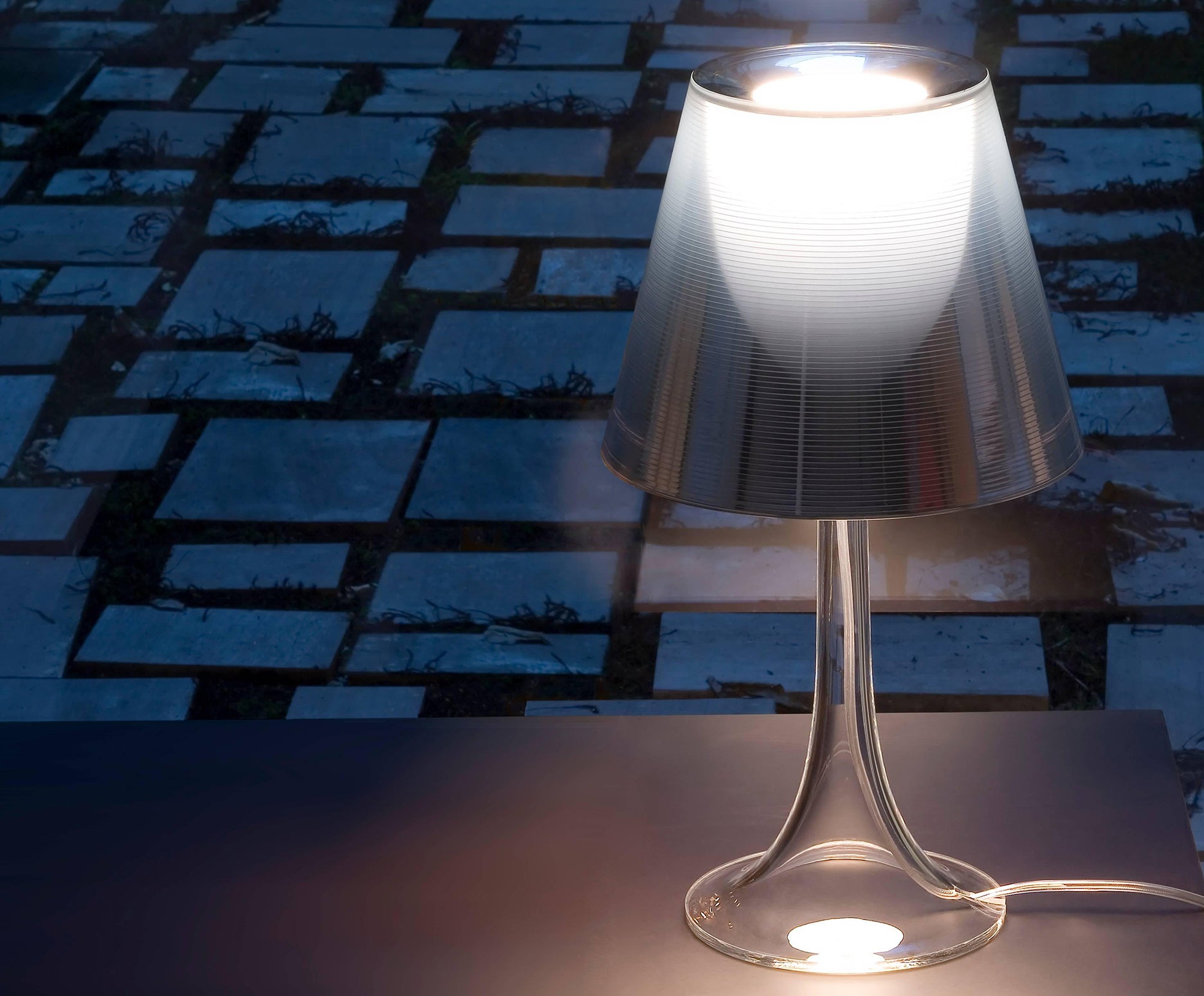
Miss K Table Lamp
With its bell-shaped shade and simple, rounded base, the Miss K table lamp is a playful and provocative work from French architect and industrial designer Philippe Starck (b. 1949). Conceived in 2003, Starck’s lamp is fully transparent, from its shimmering shade to the power cord that slinks through its tapered base. When the lamp is turned off, it’s sleek and alluring, with exterior finishes available in metallic silver, black or red. But when the lamp is turned on, a striking X-ray effect materializes, owing to the dual-diffuser system and transparent components.
Starck advocates for the democratization of design — creating products “for society as a whole”— and has said that well-crafted products should be available to everyone. His philosophy is that ethical design and good style can (and should) be connected to affordable accessibility, and environmental consideration is also a priority. “The stupidity of the ecological movement is that people kill trees for wood,” he told Wired magazine in 2008. “It's ridiculous.” Like the celebrated Miss K table lamp, many of Starck’s products are built with durability in mind and rely on plastics that are created with low emissions so that the impact on the earth is minimal. This particular fixture follows the equally sustainable Miss Sissi lamp, which was built with biodegradable plastic, and from Starck and Eugeni Quitllet, the Zartan chair, which is made with recycled polypropylene and is recyclable.
Designed by Starck for Italian lighting company FLOS, the Miss K, with its built-in dimmer and sloping funnel-shaped leg, is at once playful and sleek. It’s classic and boldly contemporary, in the same way that many of Starck’s other well-known pieces — such as the Juicy Salif lemon squeezer, which is the only lemon squeezer in the Museum of Modern Art’s permanent collection — are delightfully whimsical but sophisticated. Because it has proved so popular, the Miss K table lamp is still produced to this day by FLOS.